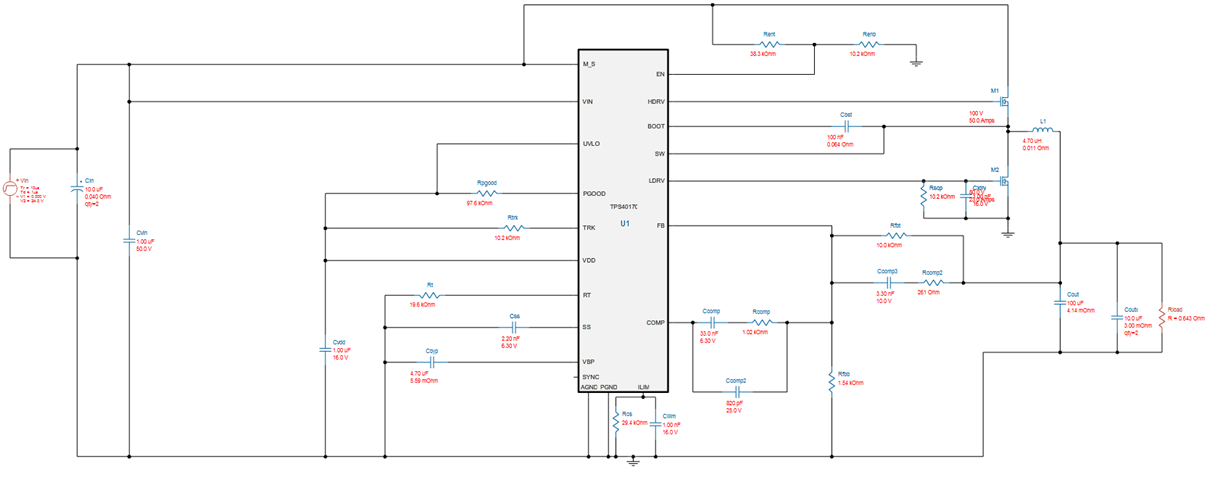Other Parts Discussed in Thread: CSD18543Q3A
I'm using the TPS40170. I designed it in webench. Input voltage is 10-36V, output is 4.5V at 7A max
I have my design up and running. Initially I had problems with switching noise getting on the high side mosfet gate causing occasional short circuits (as both mosfets were on) at certain input voltages. However, some extra low value ceramic capacitors on the input power rail near the high side mosfet fixed this by removing noise.
Now all seems to be working, however my low side FET is getting hot. At 12V it is around 90*C, and at 24V it increases to 110*C approx. Attached is my circuit diagram. The thermal simulations I have run, show the low side FET being a lot cooler (80*C max - no fans).
Low side FET = BSC340N08NS3-G
High side FET = CSD18543Q3A
I could do with some input on what to look out for to lower my temperature. I've had to increase the Rlimit capacitor, as at 6.5A it was starting to limit itself, due to the increase temperature in the low side FET.


